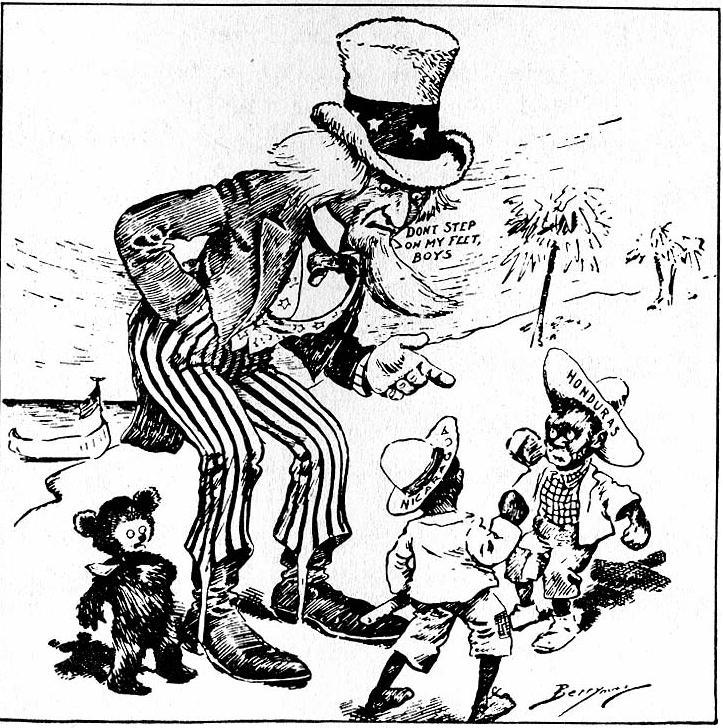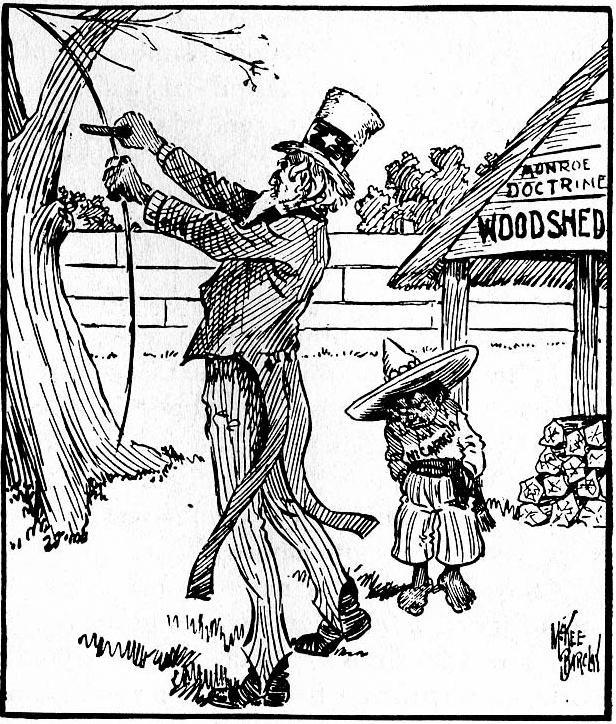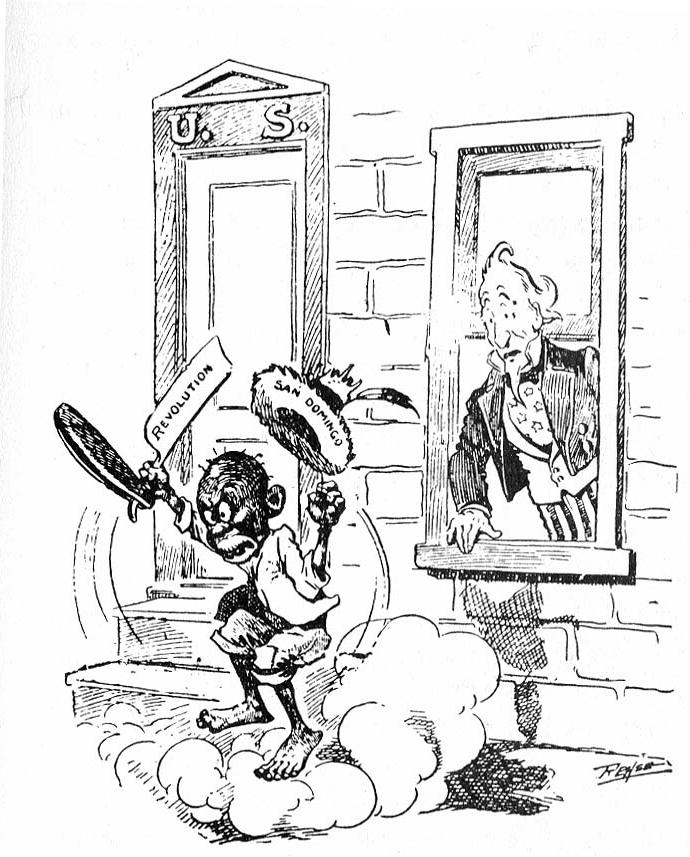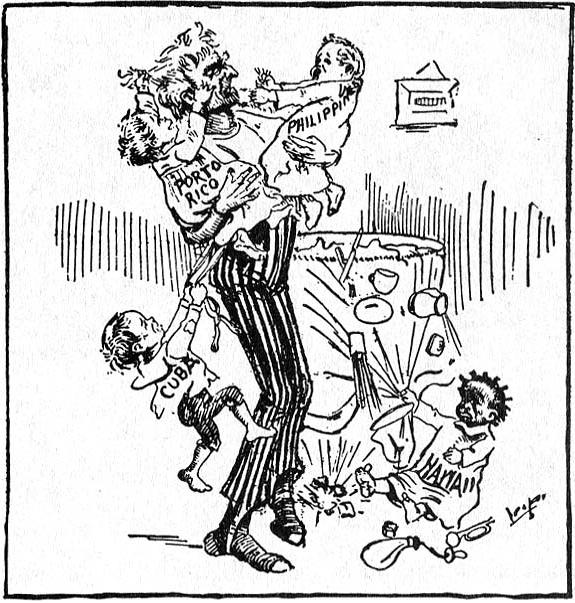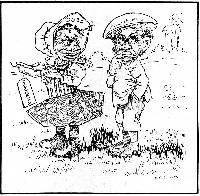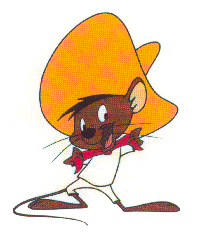
19th Century Political Cartoons
1898 - 1910:
Occupation of Cuba, the Philippines, Puerto Rico, and Guam along with the 1893 annexation of Hawaii. The perpetuation of the child-like stereotype is contingent on the sensationalist U.S. press at the time. These editorial cartoons along with radicalized newspaper coverage help to advance the idea of the United States as benevolent savior. Along with providing stability, the United States also tries to implement social control through the restructuring of the family. The idea of civilizing the savages was a seductive one and, indeed, a popular one for a time. While the United States was often welcomed, especially in Puerto Rico and Cuba, eventually the US presence created a sense of nationalism and dissatisfaction in the American occupation. Cuba especially had just fought a war to rid itself of Spanish Imperialism and, with the help of the U.S., had done so. However, the Caribbean quickly came under a new master in its former ally.
The U.S. desired control of these areas as they were crucial economic and military locations. They also wanted an end to what they saw as European dominance in the area of economics and exports. The Monroe Doctrine (1823) explicitly stated that the U.S. would not tolerate European colonialism. While the government wanted to be on par with the European superpowers, they also wanted to create a sense of stability within the struggling U.S.
.
Click any image to view page or use the link bar to the right.
